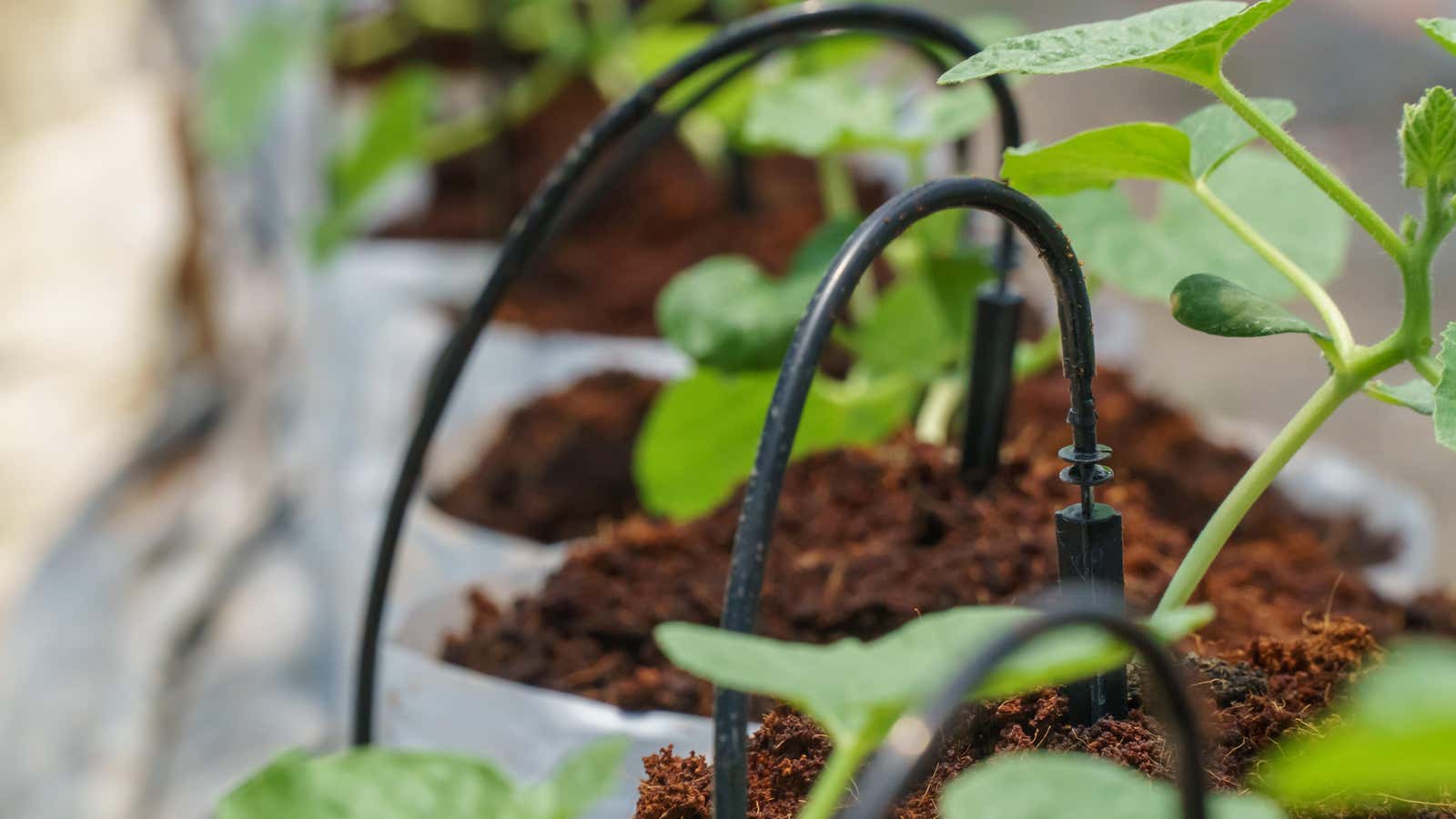Save Time and Money With Your Own Garden Drip Irrigation

Your garden and potted plants can really benefit from a drip irrigation system. These systems reduce the time you spend watering your plants, can help you properly water fragile plants on hot days, and water indoor plants while you’re out of town for long weekends. Many drip irrigation systems can be created with just a few simple tools and materials and can be filled with rainwater, making them simple and affordable. Here’s how you can make one.
Figure out which method you want to use
There are three main types of drip irrigation systems:
- Wick method. This involves filling a container, or multiple containers, with water and then installing a wick , string , or rope , which will use gravity to slowly move water from the container into the soil, keeping your plants hydrated for a period of time. This method can be used on raised beds, potted plants, or even individual plants that are directly in the ground. You can use any container that will store water and that will allow you to run a rope from top to soil height into the soil to allow gravity to carry the water. Some people use empty plastic bottles, buckets or pots.
- Buried container method. This simple drip system uses a buried container such as a milk jug, five-gallon pail, or barrel with small holes in the sides. After making small holes in the container, bury it near the roots of the plant or plants you wish to water, leaving the hole slightly above the soil surface so you can refill it.
- Drip hose systems. The most common drip irrigation system is the gravity fed drip hose. They can be made from a drum or five gallon pail, PVC pipe, flexible hose, nozzle with check valve and gaskets, and nuts. To make the transition between the hose and the PVC, you will also need an adapter that screws onto your hose and some PVC glue. You will also need a drill for this project so you can drill holes in the PVC drip line and install a valve if your container doesn’t come with one.
There are also companies that specialize in drip irrigation systems if you want to buy ready-made materials or get some inspiration.
Assemble and install the drip line
Start building your drip line by sizing it according to the area you need to water. If you are watering a small area with potted plants, you can use the hose as a drip line. If you are aiming for a wider area, you will need to cut the PVC pipe to the correct length for your plants. Drill small holes ⅛ to ¼ inch every eight inches or so, depending on how far apart your plants are, then connect the drip line to the container. If your container already has a nozzle, you can simply screw the end of the hose into the nozzle from one side. If not, you will need to install the nozzle by drilling a hole the same size as the hole opposite the nozzle, then applying gaskets and tightening the nut inside the container, making sure there are no leaks.
To attach the PVC pipe to the drip line, glue the adapter to the end of the PVC pipe closest to the container and then screw it into the hose. It is important to follow the instructions for the PVC adhesive to get a good seal. Finally, simply fill the container and open the faucet to let the water flow.